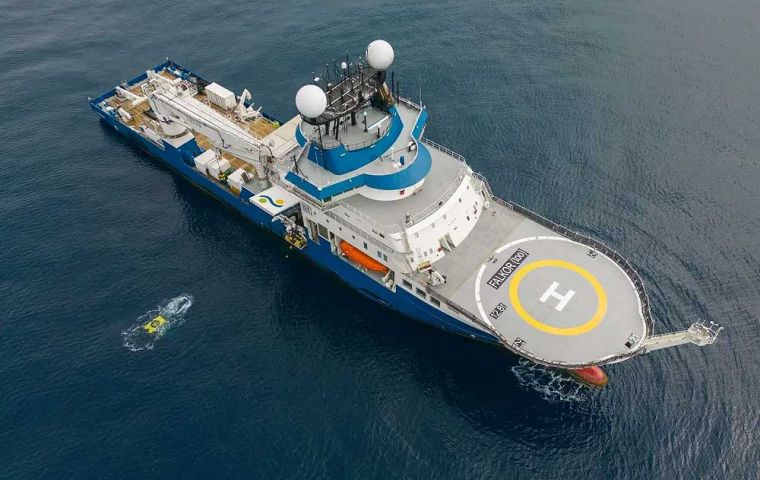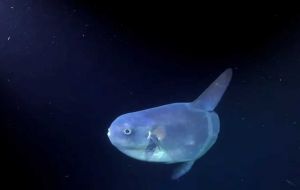MercoPress. South Atlantic News Agency
Pilots recount deep-sea mission off Uruguay with Schmidt Ocean Institute’s ROV SuBastian
 The expedition also highlighted international cooperation, with scientists from Uruguay, Brazil, Argentina, Chile and Germany working side by side
The expedition also highlighted international cooperation, with scientists from Uruguay, Brazil, Argentina, Chile and Germany working side by side After nearly a month at sea, the research vessel Falkor (too) returned to Montevideo, closing the Uruguay SUB200 expedition with unprecedented footage and discoveries from the country’s deep ocean. Central to the mission was SuBastian, the remotely operated vehicle (ROV) piloted in 12-hour shifts by a small team of specialists.
“Every movement matters,” explained Joel Pérez, one of the pilots. “When you’re trying to collect something delicate, you need precision and teamwork. Sometimes we couldn’t move more than a few meters because of the sheer richness of life on the seafloor.” His colleague Michael Silva Neto added: “We didn’t expect so many corals. Some dives were breathtaking.”
Un video del Schmidt Ocean Institute muestra un Scotoplanes -los llamados “chanchitos” marinos- a 2.340 metros, durante la expedición a bordo del R/V Falkor (too). La misión UruguaySub200, subraya la riqueza poco conocida del fondo y la necesidad de proteger la biodiversidad… pic.twitter.com/yq9DROzJvF
— CadenadelMar (@cadenadelmar2) September 18, 2025
SuBastian, a 3.2-ton robot equipped with 4K cameras and robotic arms, descended more than 4,000 meters to capture rare images of Dumbo octopuses, deep-sea sharks and fields of white coral. The vehicle’s multiple cameras recreate human depth perception, allowing pilots to manipulate samples with surgical accuracy.
But the technical challenge was only part of the story. “The hardest thing is staying mentally strong,” said Pérez. “We live confined for weeks, sometimes months. Psychology and human relationships matter as much as the technology.”
The mission’s live-streamed dives reached thousands of viewers worldwide, sparking unexpected enthusiasm. “One comment said, ‘After watching eight hours, I want to be a scientist.’ That’s what this is about—showing kids a path to science,” Silva Neto told El País.
URUGUAY SUB200 Revelando los misterios del mar uruguayo El programa Uruguay SUB200, con la campaña del B/I Falkor (Too) en aguas uruguayas, unifica los aspectos científicos, institucionales y culturales asociados a la expedición. @Udelaruy @SchmidtOcean pic.twitter.com/wvNT9RQO7n
— Karumbé (@karumbeuy) September 1, 2025
The expedition also highlighted international cooperation, with scientists from Uruguay, Brazil, Argentina, Chile and Germany working side by side. “Generosity and teamwork were everywhere,” Pérez recalled. “If someone spotted something important for another project, they immediately shared it.”
As the Falkor (too) prepares for its next campaign in Patagonia, Schmidt Ocean Institute plans further expeditions in Brazil in 2026 and Africa from 2027. Uruguayan scientists stressed that SUB200 is just the beginning: “What we found will feed research for decades to come.”





Top Comments
Disclaimer & comment rulesCommenting for this story is now closed.
If you have a Facebook account, become a fan and comment on our Facebook Page!